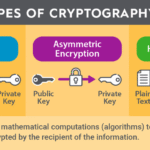In an increasingly interconnected digital landscape, the secure transmission of data is an essential consideration for organizations and individuals alike. Data in transit refers to the information actively moving from one location to another, whether across networks or between devices. This state of data poses various risks, making it imperative to understand the mechanisms in place to safeguard it, particularly through encryption. Encryption acts as a formidable barrier against unauthorized access and potential data breaches, ensuring that sensitive information remains confidential during its journey.
To grasp the significance of data in transit security, it is crucial first to delineate how data travels. When information is sent over the internet or through private networks, it traverses myriad paths, often moving across multiple servers and routers. Each juncture represents a potential vulnerability where malicious actors could intercept unprotected data. Consequently, securing data in transit must employ robust encryption techniques capable of thwarting such interception attempts.
Encryption, at its core, transforms readable data into an unreadable format, a cipher, accessible only to those possessing the corresponding decryption key. This process can be likened to putting a letter into a sealed envelope that only the intended recipient can open. When discussing encryption, it’s salient to distinguish between two primary types: symmetric and asymmetric encryption.
Symmetric encryption utilizes a single key for both encryption and decryption, necessitating that all parties involved maintain the same key securely. While this approach is swift and resource-efficient, its major drawback is the challenge of securely sharing the encryption key. If the key is compromised, unauthorized entities gain full access to the data. Common algorithms employed in symmetric encryption include Advanced Encryption Standard (AES) and Data Encryption Standard (DES).
On the other hand, asymmetric encryption employs a pair of keys: a public key, which can be shared freely, and a private key, which remains confidential with the owner. This dual-key system is integral to protocols like Secure Socket Layer (SSL) and Transport Layer Security (TLS), which are widely used to secure communications over the internet. Asymmetric encryption significantly enhances security by enabling secure key exchange, thus mitigating the risks associated with symmetric key distribution.
In the realm of data in transit, encryption protocols such as SSL/TLS play a pivotal role. They not only encrypt the data being transmitted but also validate the identity of the parties involved. This dual function is critical, as it ensures that the data is both secure and that the recipient is indeed who they claim to be. The ubiquitous HTTPS protocol, which stands for Hypertext Transfer Protocol Secure, relies on SSL/TLS to protect the integrity and confidentiality of web traffic. It is imperative that users recognize the significance of this protocol, as it serves as a crucial safeguard against eavesdropping and man-in-the-middle attacks.
Moreover, the implementation of Virtual Private Networks (VPNs) further exemplifies how encryption can enhance data in transit security. VPNs create encrypted tunnels between a user’s device and a server, obscuring the user’s internet traffic from prying eyes. By routing data through a secure connection, VPNs not only protect sensitive information but also allow users to circumvent geographical restrictions and maintain anonymity online.
Nonetheless, despite the myriad mechanisms available to secure data in transit, vulnerabilities persist. One significant challenge arises from human error. Users may inadvertently expose sensitive information through misconfigured settings, insecure passwords, or unintentional disclosure of encryption keys. Furthermore, a lack of awareness regarding the importance of secure practices can lead to the unwitting compromise of sensitive information.
Additionally, while encryption significantly bolsters data security, it is not impervious to sophisticated attacks. Techniques such as brute-force attacks, where an attacker systematically attempts every possible key until finding the correct one, pose ongoing threats to encrypted data. Thus, continuous advancements in encryption standards and the adoption of robust security measures remain paramount to counteract evolving cyber threats.
Regulatory bodies have recognized the paramount importance of securing data in transit, leading to the establishment of various compliance frameworks and best practices. For instance, the General Data Protection Regulation (GDPR) outlines stringent requirements for data protection, emphasizing the necessity of utilizing strong encryption methods to shield personal data during transmission across networks.
In conclusion, the security of data in transit necessitates a multifaceted approach, prominently featuring encryption as a cornerstone of protective measures. The implementation of robust encryption protocols and technologies serves to mitigate risks associated with data transmission, but it must be complemented by a comprehensive understanding of the challenges posed by human error, evolving cyber threats, and regulatory compliance. Achieving a harmonious balance of technological safeguards, user education, and stringent security practices is essential to navigate the ever-evolving landscape of data security effectively.
Ultimately, as organizations and individuals continue to transfer sensitive information across digital platforms, the imperative for enhanced data protection mechanisms becomes ever more urgent. Ensuring that data in transit is secure through the diligent application of encryption measures is not merely an option but a necessity in today’s data-driven society.








Leave a Comment